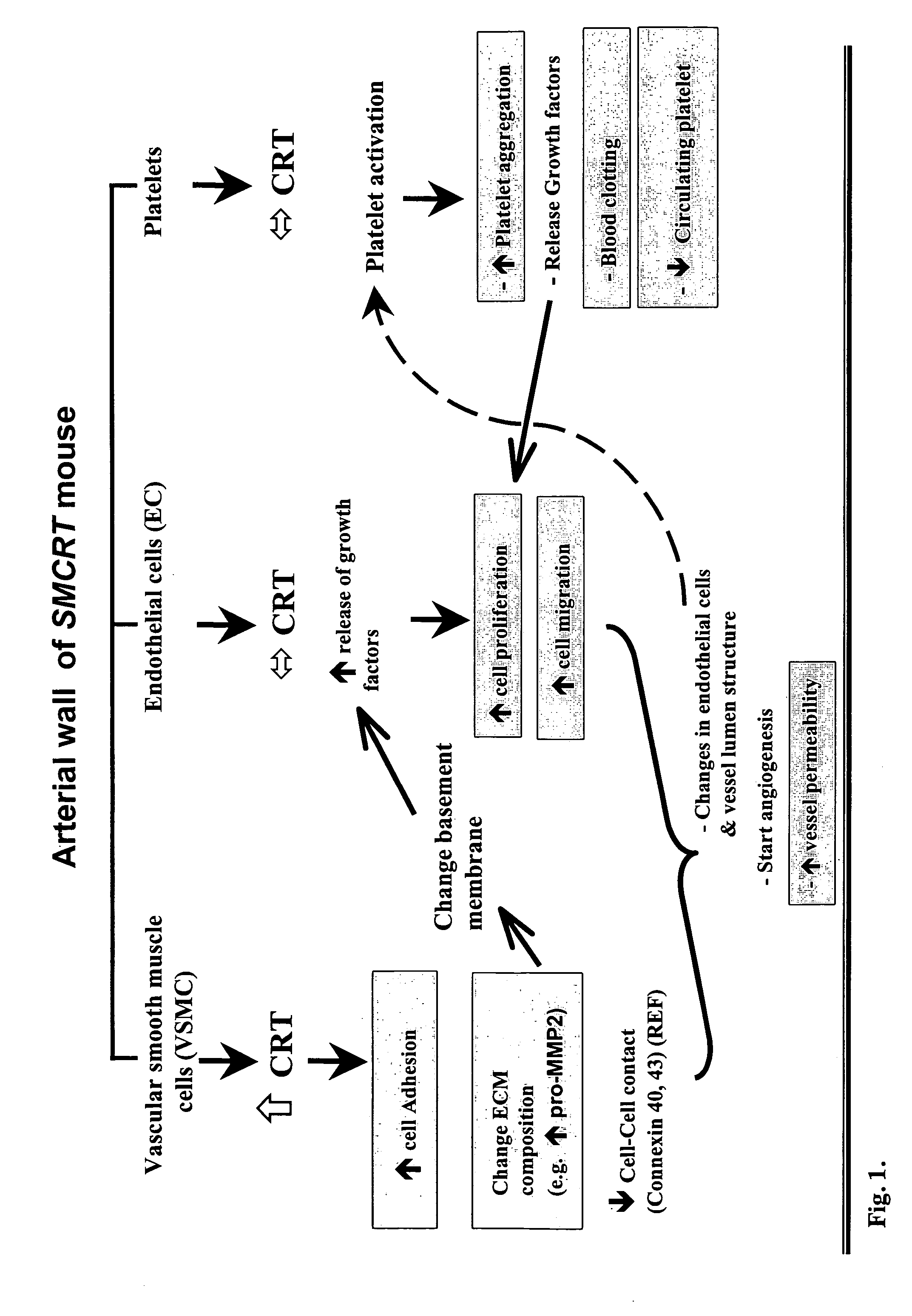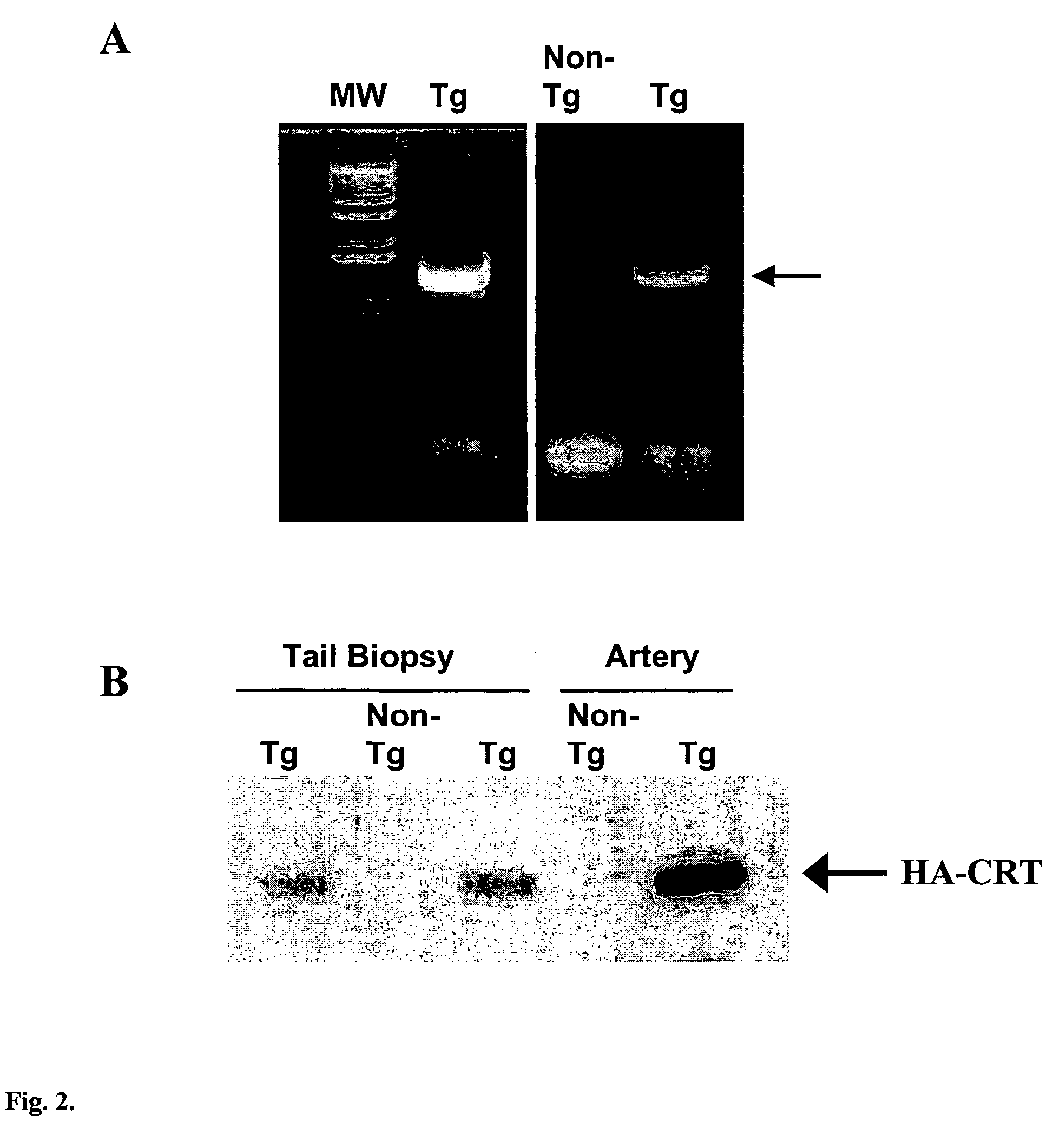Transgenic mouse over-expressing calreticulin (CRT) in vascular smooth muscle cells
a vascular smooth muscle cell and transgenic mouse technology, applied in the field of human diseases, can solve the problems of major defects in early vasculogenesis, cardiac and vascular development defects, and embryonic lethality, and achieve the effect of reducing the level of crt and diminishing the expression of cr
- Summary
- Abstract
- Description
- Claims
- Application Information
AI Technical Summary
Benefits of technology
Problems solved by technology
Method used
Image
Examples
Embodiment Construction
[0042]Unless defined otherwise, all technical and scientific terms used herein have the same meaning as commonly understood by one of ordinary skill in the art to which the invention belongs. Although any methods and materials similar or equivalent to those described herein can be used in the practice or testing of the present invention, the preferred methods and materials are now described. All publications mentioned hereunder are incorporated herein by reference.
[0043]As used herein, “calreticulin” or CRT, depending on the context, refers to a peptide encoding CRT as shown in FIG. 16 or 17, a cDNA encoding CRT as shown in FIG. 16 or 17, a cDNA molecule deduced from said peptide sequence, or a bioactive fragment or mutant or variant, either inter-species or intra-species, form thereof. As will be appreciated by one of skill in the art, a variant may be CRT from a different species which has at least 60% homology, or at least 70% homology or at least 80% homology to CRT amino acid s...
PUM
| Property | Measurement | Unit |
|---|---|---|
| pore diameter | aaaaa | aaaaa |
| pH | aaaaa | aaaaa |
| adhesion | aaaaa | aaaaa |
Abstract
Description
Claims
Application Information
 Login to View More
Login to View More - R&D
- Intellectual Property
- Life Sciences
- Materials
- Tech Scout
- Unparalleled Data Quality
- Higher Quality Content
- 60% Fewer Hallucinations
Browse by: Latest US Patents, China's latest patents, Technical Efficacy Thesaurus, Application Domain, Technology Topic, Popular Technical Reports.
© 2025 PatSnap. All rights reserved.Legal|Privacy policy|Modern Slavery Act Transparency Statement|Sitemap|About US| Contact US: help@patsnap.com



